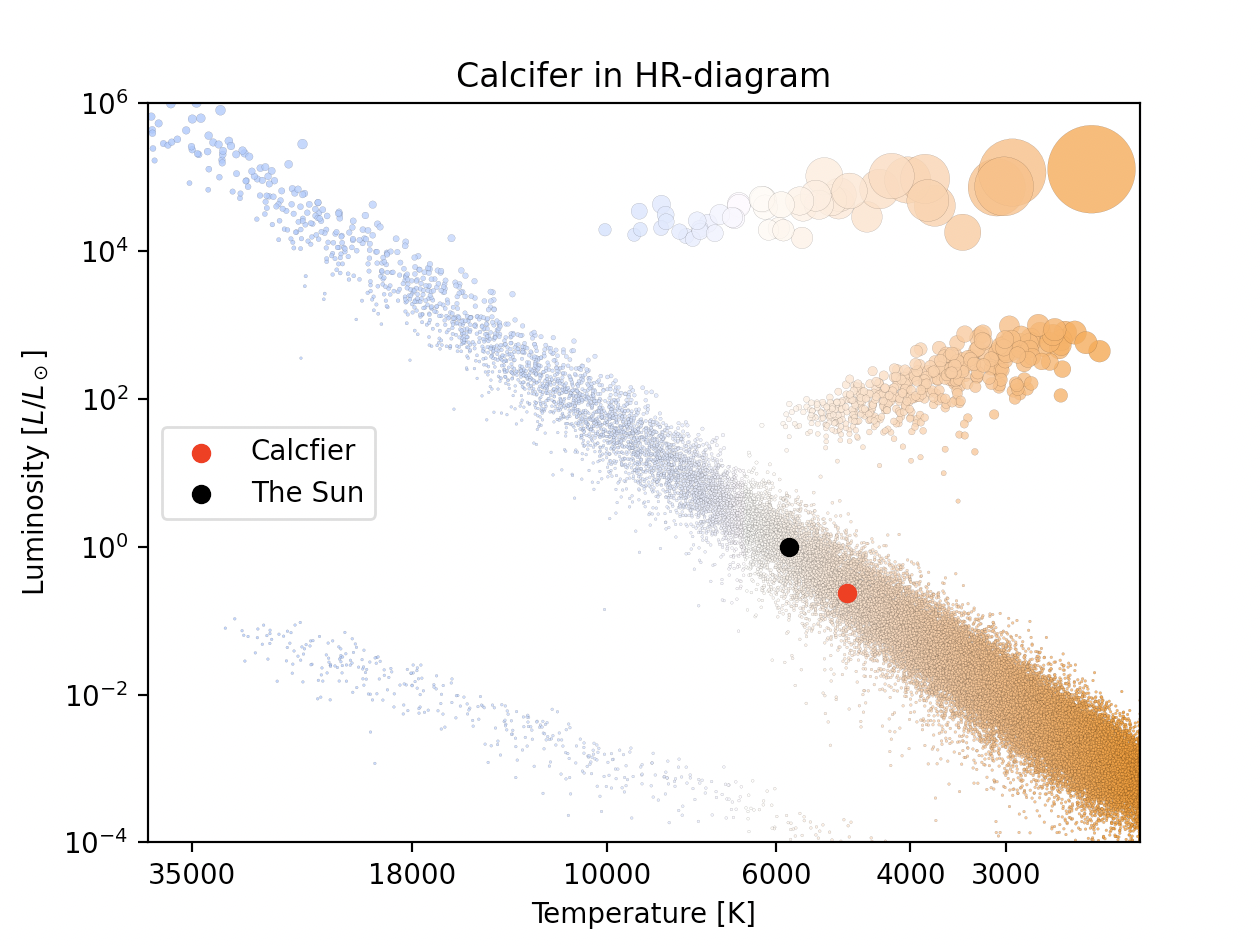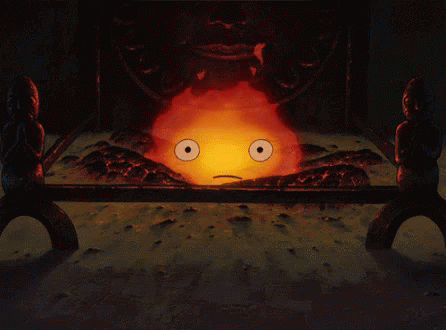So far we've briefly mentioned Calcifer, the sun of Camphor. Though, we never introduced you properly to him. This post is dedicated to Calcifer and you will get to know him on a personal level (hopefully, he is a little shy).
Think of it like a date. You just matched with Calcifer on Tinder and want to get to know him better. Like how much luminosity does he have? Where do we sort him in the HR-diagram? Is he a main sequence star? For how long will he remain in the main sequence if he is a main sequence star?

HR-diagram, the star sorter
An HR-diagram correlates the surface temperature of a star (in kelvin) to its luminosity (in this case measured in sun luminosities). It is a way to sort stars.
Important: The further to the left a star is placed, the higher the surface temperature.
There are also different versions of the HR diagram, other than the one illustrated here.
Luminosity is the amount energy emitted from an area A over time t. More intuitive: Brightness of a celestial object.
In our HR diagram, we decided to measure luminosity in relation to the Sun for a more intuitive understanding.
HR- diagram explained
The main sequence: The sun is a typical main sequence star.
White dwarfs: Similar radii to the earth. They have low luminosities, but incredibly high surface temperature. Smol, yet hot.
Giants and supergiants: Cold stars (as in 2226.85 degrees celsius 🙃) with a radii up to 200 times larger than the Sun. Cold, yet big big.
Where does Calcifer belong in the HR-diagram? What is his luminosity? How is luminosity even measured?
A while ago, while measuring the surface temperature of Lajaland we derived this expression for luminosity (click here to check how it was done)
\(L = 4\pi r_{Calcifer}^2\sigma T_{Calcifer}^2\)
where
\(\sigma = 1.38064852\cdot 10^{-23} \frac{m^2kg}{s^2K}\) is Boltzmann constant.
r: Radius of Calcifer
T: Surface temperature of Calcifer
From the formula we obtain these values
Weight: 1.362963723129028e+30 kg surface temperature: 4845.167706297031 K Luminosity of Calcifer is 9.179767552800958e+25 W
Calcifer has a luminosity of 9.179*1025 W and the Sun has a luminosity of 3.846*1026W. So expect the Sun to be placed higher than Calcifer in the HR-diagram
Both of them placed in HR-diagram looks something like this

Well, look at that. Calcifer is in fact a main sequence star like the Sun. It does not have as high value of luminosity as the Sun and is therefore placed below the Sun, as expected.
How long will Calcifer stay in the main sequence?
In short terms: The bigger the star, the shorter life span in the main sequence. This is because its life span in the main sequence directly correlates to its mass. The time of a star in the main sequence is inversely proportional to its mass cubed. So if the mass increases, the time decreases and vice versa.
The energy of Calcifer can be described as \(E = pMc^2\).
\(E = Mc^2\) is recognized as the famous Einstein equation. Meanwhile, p is the fraction of the mass of the star which is converted to energy.
We have \(L = \frac{E}{t}\), which is the definition of luminosity mentioned above. If we manipulate that we obtain this expression for the life span of a star in the main sequence.
\(L_{Calcifer} = \frac{pM_{Calcifer}c^2}{t_{life}} \rightarrow t_{life}=\frac{pM_{Calcifer}c^2}{L_{Calcifer}}\)
A star is expected to leave the main sequence when 10% of its hydrogen has been converted to helium. The efficiency of a pp-chain is 0.7%.
pp-chain refers to a fusion reaction in the core of Calcifer, where 4 protons are fused to 1 Helium atom. Read about it here (ps. the link leads to a future post).
Fusion reaction are when two or more atomic nuclei combine themselves and create a different atomic nuclei.
So the equation for life span in main sequence looks something like
\(t_{life}=\frac{0.1 \cdot 0.007 \cdot M_{Calcifer}\cdot Speed_{light}^2}{Luminosity_{Calcifer}}\)
The reason I chose to not write the mass of Calcifer, speed of light and luminosity of Calcifer in the equation above is because there are so many numbers heheh... However, all values are listed in the grey box above.
As someone I knew once said: It gets piggy 🐷 (aka. messy)

Calcifer is expected to live on the main sequence for 9.340971743377128e+17 year
